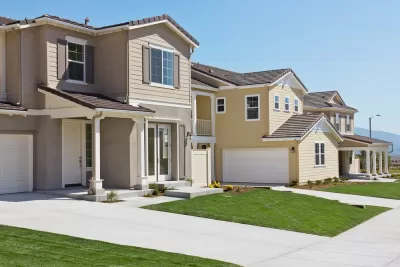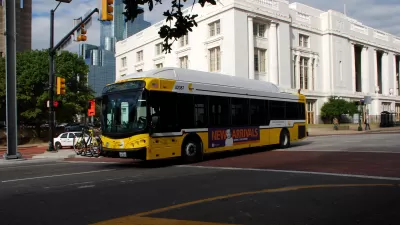According to one Dallas suburbanite, the American lawn is a "decadent and unsustainable totem[s] of middle-class prosperity."

No single feature of a suburban residential community contributes as much to the charm and beauty of the individual home and the locality as well-kept lawns," declared Abraham Levitt, founder of Levittown, one of America's first suburban tract developments.
Americans imported the concept of a residential lawn from England, where rainfall is abundant year round. However, even there, lawns were historically a luxury. "For several centuries, lawns were the exclusive purview of very rich Europeans, people who were wealthy enough to keep large swaths of land out of productive cultivation and afford the labor required to keep the grass neatly scythed," writes Nicholson.
Today, Nicholson points out, Americans allocate three times more land to lawns than corn. As the largest irrigated crop in the country, the acres of lawn would blanket the state of Mississippi. The environmental effects of maintaining these lawns are substantial.
According to National Geographic, "One sprinkler hose uses an estimated nine gallons of water per minute, or 530 gallons of water per hour. "Furthermore, Americans use 800 million gallons of gas per year to run gas-powered lawnmowers. A conservative estimate of the amount of air pollution emitted by one hour of running a gas mower is four hours. One study claims the equivalent of 11 new cars running for one hour each.
In drought-stricken California efforts are being made to reduce the amount of water wasted on lawn care, by regulating the number of hours per week a resident can water a lawn and relaxing restrictions on artificial turf. But Nicholson is not so optimistic about Texas.
They are effectively part of North Texas' infrastructure, there for however long the house it surrounds stands. But at the very least people can water a little less, rely on native plants a little bit more. If one simply must have the perfect golf-course lawn, at least let some kids play on it. Finally, if you see a lawn that's a bit overgrown or rough around the edges, don't call code enforcement; congratulate the neighbor on taking a principled stand with their forward-thinking mowing and irrigation policies."
FULL STORY: Death to Lawns

Alabama: Trump Terminates Settlements for Black Communities Harmed By Raw Sewage
Trump deemed the landmark civil rights agreement “illegal DEI and environmental justice policy.”

Planetizen Federal Action Tracker
A weekly monitor of how Trump’s orders and actions are impacting planners and planning in America.

Why Should We Subsidize Public Transportation?
Many public transit agencies face financial stress due to rising costs, declining fare revenue, and declining subsidies. Transit advocates must provide a strong business case for increasing public transit funding.

Understanding Road Diets
An explainer from Momentum highlights the advantages of reducing vehicle lanes in favor of more bike, transit, and pedestrian infrastructure.

New California Law Regulates Warehouse Pollution
A new law tightens building and emissions regulations for large distribution warehouses to mitigate air pollution and traffic in surrounding communities.

Phoenix Announces Opening Date for Light Rail Extension
The South Central extension will connect South Phoenix to downtown and other major hubs starting on June 7.
Urban Design for Planners 1: Software Tools
This six-course series explores essential urban design concepts using open source software and equips planners with the tools they need to participate fully in the urban design process.
Planning for Universal Design
Learn the tools for implementing Universal Design in planning regulations.
Caltrans
Smith Gee Studio
Institute for Housing and Urban Development Studies (IHS)
City of Grandview
Harvard GSD Executive Education
Toledo-Lucas County Plan Commissions
Salt Lake City
NYU Wagner Graduate School of Public Service





























